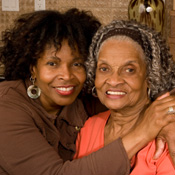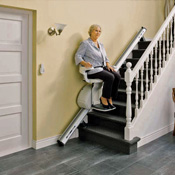Modifying Your Home
So You Want to Stay in Your Home?

You reared your children there. Time flew by, the kids flew the coop, and your beloved home, always your sanctuary, is showing its years. Heck, so are you. Admit it: On a bad day, climbing that stairway to the second floor seems like scaling Mount Everest. Carrying a laundry basket down the basement stairs is a balancing act, and the thought of lugging it up two floors to make the beds is cause to sit down and rest.
That "little fall" in the bathroom last year left your hip and ego bruised, but it was alarming enough that your children became concerned about your ability to stay safe and independent at home.
Before the "For Sale" sign goes in the front yard, take a few moments to sit down with your loved ones and read through this guide. You’ll learn about the many ways to make your home safer and more livable.
Some involve simple changes that might make you say, "Why didn't I think of that?" Others involve assistive devices and aids to daily living that can make everyday tasks much easier and safer. On yet another level, home modifications can literally create new, safe spaces within your home.

A 2006 study by the American Association of Retired Persons found that 89 percent of respondents wanted to stay in their own homes as long as possible. This guide is intended to help you stay in your own home as long as you wish and on your own terms. It contains useful information about ways to help you get around in your community. We can help you make informed decisions about assistive equipment, and home modifications that can be the difference between staying independently in your home and alternatives that are not nearly as desirable.
Each situation that calls for home medical equipment is unique. Surgery, long and short-term disability, mobility limitations, respiratory disease, aging parents who want to stay in their homes, children with disabilities or medical conditions – each presents its own set of challenges. This guide offers home care product options that can make life easier for both patient and caregiver.
Let's get started!